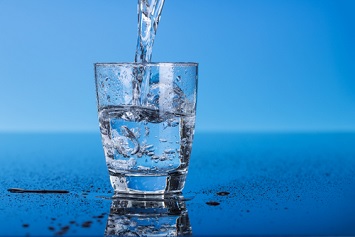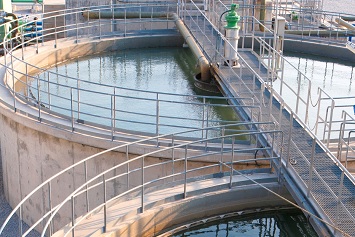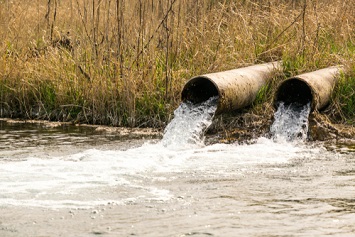EPA Administrator Andrew Wheeler’s remarks at the September 12, 2020, G20 Agriculture and Water Ministers Meeting stressed that water issues are the biggest environmental challenges facing the world now. He emphasized the lack of access to safe drinking water by approximately 2 billion people globally.
 Known as the G20 Water Dialogue, this inaugural meeting kicks off a forum that will share best practices to foster “sustainable and resilient water management,” according to the EPA’s press release.
Known as the G20 Water Dialogue, this inaugural meeting kicks off a forum that will share best practices to foster “sustainable and resilient water management,” according to the EPA’s press release.
Changes regarding how the world uses water supplies are vital, said South Africa’s Human Settlements, Water, and Sanitation Minister Lindiwe Sisulu, according to the South African Government News Agency.
“Water is a vital concern at all levels and water challenges affect human life, people’s livelihoods, global supply chains, food security, nutrition and ecosystems. It is crucial and urgent that we work towards attracting and increasing water-related investment, innovation, and water security, if we are to achieve the objectives of this forum,” Sisulu said.
Wheeler agrees.
“Water issues are the most immediate environmental concern facing the world right now,” Wheeler said. “This translates to three main areas: improving access to safe drinking water, preventing marine litter, and strengthening water infrastructure.”
Improving Access to Safe Drinking Water
The threats to safe drinking water are numerous and include growing demand, water scarcity, water pollution, insufficient access, freshwater ecosystems at risk, climate change, and local water supply stressors.
The global use of water averages 4,000 cubic kilometers per year, which is the equivalent of all the water in Lake Michigan, according to the Pacific Institute. The amount of water being used has tripled from 50 years ago and is predicted to increase 55% by 2050. Increased demand for freshwater use is largely driven by agricultural needs as food production continues to increase to meet population growth. Agriculture use accounts for about 70% of global freshwater usage. This usage is expected to increase 69% by 2035. Energy production accounts for 10% and is on track to increase 35% by 2035, according to the Pacific Institute.
More than 1.7 billion people get their freshwater supply from river basins that are unable to meet the demand for water supply for the population. These imbalances are a problem that industry contributes to and faces operational challenges due to inefficient supply. Water scarcity has become a risk factor for investors to consider.
Pollution also contributes to stress on safe drinking water systems. Almost all use of water leads to pollution, including industrial, agriculture, and municipal.
“Globally, it is likely that over 80% of wastewater is released to the environment without adequate treatment,” according to the United Nations.
And in some areas, there is plenty of water, but there is a lack of access to safe, affordable water, sanitation, and hygiene (WASH). This problem is prevalent in many poor countries that lack adequate infrastructures. “Every year approximately 700,000 children under (the age of) five die due to inadequate WASH,” according to the Pacific Institute.
Damage to freshwater ecosystems has also contributed to less available fresh water.
“The total value of the world’s (water-related) ecosystem services is estimated at some $147 trillion, but over 60 percent of these are being degraded or used unsustainably,” according to the Pacific Institute. “If we continue to degrade these systems, those services—water supply, recreation, and flood protection to name a few—will no longer be naturally available. Businesses relying on these natural services will face extremely high costs in replacing or recreating them.”
Another stress on the world’s water supply is the increasing effects of climate change, with some estimates placing 1.6 billion people at risk from floods and $45 trillion in physical assets at risk by 2050, as well as an estimate of 3.9 billion people projected to be living in river basin areas under severe water supply stress by 2050.
Experts suggest a number of solutions, including education, new water conservation technologies, recycling, improved agricultural practices, energy-efficient desalination plants, improved regulations, decreased corporate use, innovation, climate change mitigation, and population growth control, according to circleofblue.org.
Preventing Marine Litter
Wheeler’s comments at G20 highlighted the EPA’s Trash Free Waters program, which works to reduce and prevent trash from entering U.S. waters and the ocean.
“The U.S. is taking a leadership role in this area. EPA’s Trash Free Waters program works directly with states, municipalities, and businesses to prevent trash from entering waterways, and capture trash when it has reached the water,” according to the EPA. “We currently have over 50 partnership projects across our country, and we’re taking what we have learned and expanded it to communities in Central America, the Caribbean, and South America.”
Trash in our water supply sources transports chemical pollution, threatens aquatic life, harms physical habitats, and interferes with the use of rivers and coastal environments, as well as marine ecosystems.
Marine pollution is particularly difficult on “benthic” habitats, or those occurring at the bottom of a body of water. Animals and plants living on the bottom of water sources are known as benthos species. Pollution accumulation on the bottom of water sources depletes oxygen levels and light levels, which results in a decline in benthos species. As these species decline, so do the number of marine species that depend on benthos species for foraging and shelter.
The chemical impacts of marine pollution continue to increase. “Persistent, bioaccumulative and toxic (PBT) substances are chemical compounds that are resistant to degradation (breaking down), are highly mobile in the environment and exhibit a high degree of toxicity,” according to the EPA. “PBTs bioaccumulate (meaning the substance is retained and builds up within a single organism) and biomagnify up the food chain (meaning that organisms at higher levels on the food chain show increasing levels of the substance because they are constantly eating the substance embedded in the tissue of their prey).
“Based on a number of studies, including those conducted by EPA, plastics have the potential to adsorb chemicals of concern from the environment, and serve as a potential global transport mechanism for contaminants of concern into the food chain and potentially to humans who eat seafoods,” according to the EPA.
In 1988, beaches in New Jersey and New York were closed due to the large amount of medical waste that washed ashore. The loss of revenue in those communities at that time was estimated at as much as $3 billion.
“West Coast communities are spending more than $520 million a year to combat litter and prevent trash from becoming marine debris,” according to the EPA. “This public cost burden makes yet another reason for finding effective strategies to reduce the trash entering our waterways and contributing to marine debris.”
Two successful resources have been developed as part of the Trash Free Waters program.
- National Great Practice Compendium: highlights outstanding activities, technologies, and programs that prevent trash from entering the aquatic environment and/or reduce the overall volume of trash that is generated. To qualify as a great practice, activity must achieve “measurable progress towards its trash prevention and/or reduction goals” and show “a clear return on investment from such efforts,” according to the EPA.
- Atlas of Gulf States Litter Control Policy and Programs: a collection of state and local policies and programs that reduce and prevent aquatic trash, as well as the related enforcement mechanisms that support them.
The EPA also regularly awards grant funding for innovative projects that focus on removing trash from U.S. waterways. For example, in April 2020, the Agency’s Gulf of Mexico region announced awards of $7.8 million in grant funding to 17 recipients.
Strengthening Water Infrastructure
The “UN World Water Development Report,” published in March 2020, identified underfunding of water infrastructure around the world as one of the main issues to be resolved to improve access to safe drinking water.
Wheeler’s remarks at G20 also included comments on the need for greater global innovation in water infrastructure and financing. He touted the Trump administration’s water infrastructure spending. “Under President Trump, EPA has closed on 26 Water Infrastructure Finance and Innovation Act loans totaling over $5.6 billion dollars in credit assistance, which in turn is helping finance over $12.4 billion dollars in water infrastructure projects,” according to the EPA.
Water is often overlooked for spending and investment because the economic benefits of better water and sanitation are not emphasized, according to Richard Connor, editor of the UN Water Report, as reported in theguardian.com.
“One of the reasons underlying the investment gap in water and sanitation is that these services are perceived mainly as a social—and in some cases environmental—issue, rather than an economic one, like energy,” Connor said. “Yet the economic costs of an outbreak [such as Covid-19] are enormous, both in terms of national economies and stock markets, as well as in terms of household revenue—when people cannot work because of sickness or lockdowns. Realizing the economic importance of water and sanitation should provide an additional catalyst for greater investment.”
 People, in general, are not thrilled about paying for the expensive costs associated with treating and transporting water once it leaves their homes, he said. “Once it is flushed down the toilet, it disappears and becomes someone else’s problem,” said Connor. “Treating wastewater is several times more expensive than treating the source water in the first place. So without a willingness to pay on the part of users, it falls on governments to foot the bill, and since they do not recognize the economic value of wastewater treatment—which is perceived as more of an environmental issue—the political will behind such spending is low.”
People, in general, are not thrilled about paying for the expensive costs associated with treating and transporting water once it leaves their homes, he said. “Once it is flushed down the toilet, it disappears and becomes someone else’s problem,” said Connor. “Treating wastewater is several times more expensive than treating the source water in the first place. So without a willingness to pay on the part of users, it falls on governments to foot the bill, and since they do not recognize the economic value of wastewater treatment—which is perceived as more of an environmental issue—the political will behind such spending is low.”
The return on investing in water infrastructure is high, according to Conner, with a global average benefit-cost ratio of 5.5 for improved sanitation and 2.0 for improved drinking water when broader macroeconomic benefits are considered.
“Around the world, water infrastructure treatment plants, pipes, and sewer systems is in a state of disrepair,” according to the World Resources Institute (WRI). “In the United States, six billion gallons of treated water are lost per day from leaky pipes alone. Built infrastructure is notoriously expensive to install and repair, meaning that many localities ignore growing infrastructure issues until disaster strikes, as it did in California earlier this year.”
In February, California’s Oroville Dam, located in northern California, developed an erosion leak in its emergency spillway during a period of heavy rain that caused the evacuation of almost 190,000 people, according to nbcnews.com.
Nature’s own water infrastructures are also being threatened and ignored, according to WRI.
“Healthy ecosystems are ‘natural infrastructure’ and vital to clean, plentiful water,” according to WRI. “They filter pollutants, buffer against floods and storms, and regulate water supply. Plants and trees are essential for replenishing groundwater; without them, rainfall will slide across dry land, instead of seeping into the soil. Loss of vegetation from deforestation, overgrazing and urbanization is limiting our natural infrastructure and the benefits that it provides. Forested watersheds around the world are under threat: watersheds have lost up to 22 percent of their forests in the past 14 years.”
Wrapping up the G20
Additionally, the Agriculture and Water Ministers discussed the impact of COVID-19 to food security and water management and the importance of avoiding food loss and waste.
The international community was encouraged to share new technology and sustainability best practices and work closely together to achieve the Sustainable Development Goals (SDGs), especially SDG 6, which is to ensure availability and sustainable management of water and sanitation for all.
The G20 committee further called on countries to prioritize water demand management and conservation and to substantially increase water use efficiency and water productivity.
Conversations about water usage are past due, Sisulu said. She pointed out that G20 came during a globally unprecedented pandemic, and water is at the heart of all interventions.
“This current situation reawakened in us the notion that water is life and is central to all human development,” Sisulu said.
In addition to the United States and South Africa, countries that participated in the G20 Water Dialogue included Argentina, Australia, Brazil, Canada, China, France, Germany, India, Indonesia, Italy, Japan, Korea, Mexico, Russia, Kingdom of Saudi Arabia, Singapore, Switzerland, Turkey, United Arab Emirates, United Kingdom, Vietnam, and European Union.

